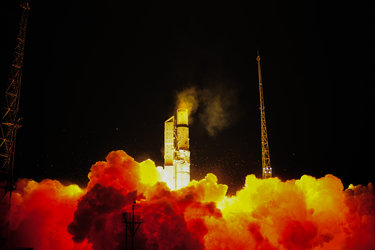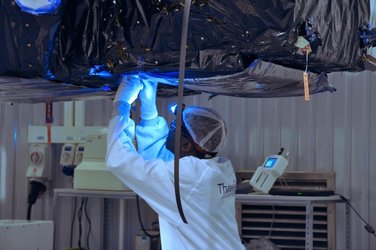Alan Belward: Land Resource Management Unit, JRC
Alan Belward is the Head of the Land Resource Management Unit at the Joint Research Centre (JRC). The Land Resource Management Unit is just one of the many organisations that will benefit from the multiple instruments on the Sentinel-3 mission.

Alan Belward, a native of the United Kingdom, works at the European Commission’s Joint Research Centre in Italy where he is head of the Land Resource Management Unit in the Institute for Environment and Sustainability. He has served on numerous international science panels and is currently lead author for the revision of the Global Climate Observing System’s Implementation Plan serving the UN Framework Convention on Climate Change. He is also a member of the NASA USGS Landsat Science Team. He has a BSc in Plant Biology from Newcastle University, a PhD in satellite remote sensing of the global environment from Cranfield University and is a Fellow of the UK’s Royal Society of Biology.
ESA: What is the Land Resource Management Unit?
Alan Belward
The Land Resource Management Unit provides information for European and international policies aiming to balance competing land-use demands whilst securing access to natural resources and maintaining ecosystem services. We need to optimise food, fibre and fuel production whilst conserving and enhancing land’s role as a carbon sink, a hydrologic reservoir and underpinning for biological diversity. The unit follows three research lines: land and soil resource assessments, cooperation on resource efficiency with EU development-assistance countries and the development of information systems and enabling technologies, especially using Earth observation data.
ESA: What are some of the major challenges to managing Earth’s land resources?
Alan Belward
Over 7 billion humans call Earth home, and this home has to support over 100 more people every minute of every day. Our growing and shifting population relies on the land for much of our wellbeing. Only 18% of the land has soils free of significant natural constraints for sustained crop production, yet we rely on the land for around 99% of our calories and by 2050 we are going to have to produce 70% more food than today. Land doesn’t just house us and feed us, it also provides essential fibre resources, bioenergy, shapes our planet’s climate, is a major reservoir for biological diversity and is a vital regulator in the hydrological cycle. The major challenge is finding balance between these needs with what is essentially a non-renewable, finite resource.
ESA: How will the Land Resource Management Unit use Sentinel-3 data in its work?
Alan Belward
The spatial, spectral and temporal characteristics of the data that will flow from Sentinel-3 will inform many of our land management programmes. The Ocean and Land Colour Instrument is going to help us characterise change in the land surface through key variables including the Fraction of Absorbed Photosynthetically Active Radiation (FAPAR), Leaf Area Index and indeed mapping different land cover classes. These information layers will help us provide information for policy makers involved in work towards the goals of the three Rio Conventions, and also a number of goals linked to the 2030 Agenda for Sustainable Development. The thermal sensors on-board will provide us with detailed information on vegetation fires too, which will help us in our work on Protected Area management as well as being essential climate variables. Grassland, forest and savannah fires release vast amounts of greenhouse gas and aerosols into the atmosphere, they affect the storage and flux of carbon in the biosphere and atmosphere and can cause long-term changes in land cover. In other words, fire monitoring is important locally and globally. The altimeter on Sentinel-3 will also provide new information for the land managers with vital data on river and lake levels, which will add to the global surface water resource mapping work we are involved in.
ESA: How will Sentinel-3 help in the area of Protected Area management?
Alan Belward
Protected Areas (PAs) play a key role in biodiversity conservation and national conservation strategies. Land cover information in and around PAs is also needed for the Convention on Biological Diversity, as this international environmental agreement aims to halve the rate of loss of natural habitats, including forest, and to increase the existing protected areas from 12% of the land surface to 17%. Pressure from growing populations can be seen though factors such as the use of fire for hunting, or in land clearance, logging etc. inside and outside parks. Sentinel-3 is going to provide an essential element of our park management and monitoring programme, allowing us to monitor parks on continental, and eventually global scales. We will be able to map fires or land cover conversions in near real time, which can then be linked to land use practices both inside parks and in the lands surrounding them.








